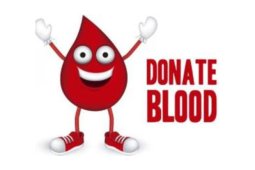Categories
- Bariatric Surgery (11)
- Black Fungus (5)
- Bone Marrow transplant (3)
- Brain Tumor Surgery Navigation Technology (20)
- Cardiac Surgery (66)
- Cardiology (97)
- Computer navigation technology for joint replacements (20)
- Covid Vaccination (17)
- Critical Care (2)
- Dental (19)
- Dermatology (31)
- Dialysis Support Group - “UTSAAH” (11)
- Dietitian (33)
- Emergency Medicine (4)
- Emotional Health (11)
- Endocrinology (33)
- ENT (20)
- Gastroenterology and GI Surgery (53)
- General and Laparoscopic Surgery (21)
- General Surgery (4)
- Gynecology & Obstetrics (183)
- Hematology (20)
- Internal Medicine (294)
- Kidney Transplant (50)
- Kidney Transplantation (20)
- Lung Cancer (8)
- Minimal Invasive Surgery (1)
- Mother & Child (20)
- mucormycosis (5)
- Nephrology (61)
- Neurology (147)
- Neurosurgery (68)
- Nutrition and Dietetics (107)
- Omicron Variant (1)
- Oncology (288)
- Ophthalmology (10)
- Orthopaedics & Joint Replacement (86)
- Paediatrics (59)
- Pediatric Nephrology (3)
- Physiotherapy (5)
- Plastic & Reconstructive Surgery (6)
- Psychiatry and Psychology (90)
- Psychologist (28)
- Pulmonology (72)
- Rheumatology (13)
- Spine Services (21)
- Transradial Angioplasty (16)
- Urology (84)
Query Form
Posted on Apr 19, 2022
What is Multiple Myeloma?
What is Multiple Myeloma?
Multiple myeloma is a kind of blood cancer that affects the elderly. This is a cancer of plasma cells. Plasma cells are a type of white blood cells. In normal conditions, healthy plasma cells make antibodies that protect us from infections. In multiple myeloma, cancerous plasma cells grow out of control and accumulate in the bone marrow. Bone marrow is the spongy tissue within some of the bones which produce all types of blood cells. These cancerous plasma cells produce a protein called M protein, which is detectable in the blood and urine. This M protein is of no use to the body. An important feature of multiple myeloma is a high level of M protein in the blood.

How does Multiple Myeloma affect the body?
As cancerous plasma cells accumulate within the bone marrow, there is little space left for the normal blood cell precursors. This leads to less production of red blood cells causing anemia. As the normal plasma cells are replaced by the malfunctioning cancerous plasma cells, hence the risk of infections increases. These cancerous plasma cells activate some other cells which result in damage to the bones. The bones become weak and easily prone to fracture. The areas of bone damage can be seen on x-ray as punched out lesions appearing as holes in the bones. Bone damage results in pain. As the spinal cord passes through space within the backbone, some of the nerves and their roots may get compressed which can result in paralysis. Bones are a storehouse of calcium. Damage to bones leads to the release of calcium into the bloodstream, called hypercalcemia. The abnormal protein produced by the cancerous plasma cells is not easily filtered out of the kidney. This leads to kidney damage. In advanced cases, it can even lead to kidney failure, requiring dialysis.
These features- increased calcium levels in the blood, renal (kidney) dysfunction, anemia, and bone lesions are called CRAB criteria- a hallmark of Multiple Myeloma.
Symptoms
Multiple myeloma commonly affects the elderly. Its symptoms are non-specific and vary from patient to patient. Due to the nonspecific nature of symptoms, this disease can be easily confused with other diseases and is often diagnosed late.
Common symptoms of multiple myeloma are fatigue/ feeling of tiredness, bone pain most commonly affecting backbone, abnormal kidney function and kidney failure, frequent infections, anemia, and high calcium levels in the blood (which can cause loss of appetite, increased thirst, and urination, nausea, vomiting, constipation, stomach upset, lethargy, confusion).
Investigations
Any person, especially the elderly, who have signs and symptoms of multiple myeloma, should consult a doctor. The doctor, if he/she suspects multiple myeloma, shall do blood, urine tests, and x rays to confirm the diagnosis. A bone marrow test and PET CT scan may be done if the suspicion is very high.
Treatment
Multiple myeloma can be controlled for a prolonged duration in a large number of patients. Once the diagnosis is confirmed, the patients are started on medicines- oral tablets and injections- to control the disease. Depending on the patient’s fitness and age, he may or may not be taken up for autologous bone marrow transplant after a few months of treatment with multiple myeloma medicines. Patients frequently require a long duration of treatment called ‘Maintenance’ running into years. Even after treatment, patients need to be in long term follow up with the treating oncologist/ hematologist to monitor the disease activity and look for signs and symptoms of relapse.



